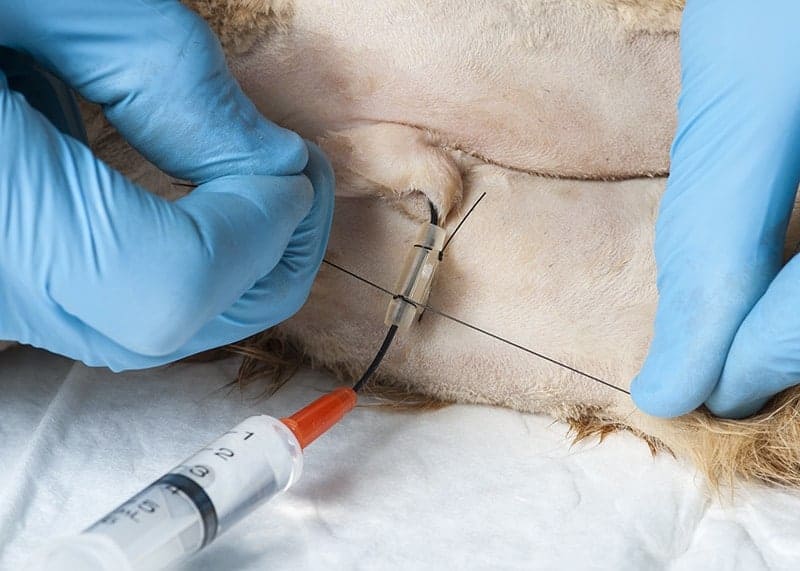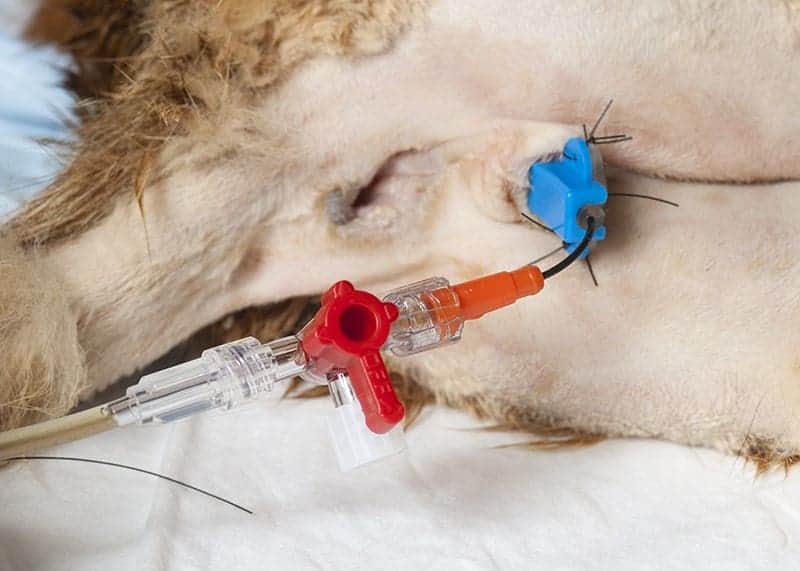Free 3-5 day delivery
on all orders
For larger or obese cats, an adjustable cat catheter is advised. Although the catheter is smooth it is advisable to use a small amount of water-soluble lubricant.

Although the catheter is smooth it is advisable to use a small amount of water-soluble lubricant.

The penis is extruded.

The catheter is advanced into the urethral orifice.

The catheter is open ended so that if an obstruction is encountered it can be flushed using a syringe attached to the hub of the catheter. Once advanced past the first 2cms the prepuce is pulled caudally to straighten the urethra so that the catheter can be advanced further.

The position of the catheter can be judged according to its length on the outside of the cat and can be verified using radiographs since the catheters are radio-opaque.

Once the length of catheter to remain in the bladder has been selected, the sleeve is placed on the catheter which allows it to be secured at the appropriate length. It is important that the tip of the catheter is comfortably within the bladder so that drainage can continue as the bladder empties.

The sleeve clicks over the catheter and is secured snugly with two circumferential sutures. There is a groove at the top and bottom of the sleeve around which the sutures are tied.

First suture in place.

Second suture in place.

A click on accessory fits over the sleeve. Both the sleeve and attachment have holes which allow suturing to the prepuce or perineal skin to provide a secure anchorage.

It is important to ensure that no loop is developing between the perineum and the attachment, otherwise the catheter will begin to work its way out.

A luer connection allows connection of a giving set or extension line. This is useful to create a closed urine collection system. The main disadvantage of doing this is that as the cat becomes more mobile it is easier for the catheter to be pulled out as the cat is likely to become tangled with the line.

Also the giving set filter creates a significant obstruction to urine flow which may not allow the bladder to empty completely- as would be wanted for a cat with an indwelling catheter. One of the purposes of an indwelling catheter is to allow the bladder to remain small so that detrusor muscle function is regained. If there is significant resistance to urinary flow, this is not achieved.

One solution is to place a three-way tap between the catheter and the collection system.

A syringe can be attached which allows the bladder to be emptied periodically – every 2 hours or so.

An alternative is to use a wide bore system so that a proprietary urine collection bag as supplied for human use can be used.

Using the standard tube supplied with the kit allows the collection bag to remain outside of the cat’s cage. The fitting is intended to attach to a wide bore catheter such as a Foley catheter and is incompatible with the luer system. The end of the tube needs to be cut off.

A system such as a Christmas tree or taper connector is used to join the two ends together. The result is a wide bore tube connected to a standard collection bag.

In theory this allows measurement of urine volume but in practice the volume is too small to be measured accurately.

A three-way tap between the catheter and collection bag allows manual emptying of the bladder.